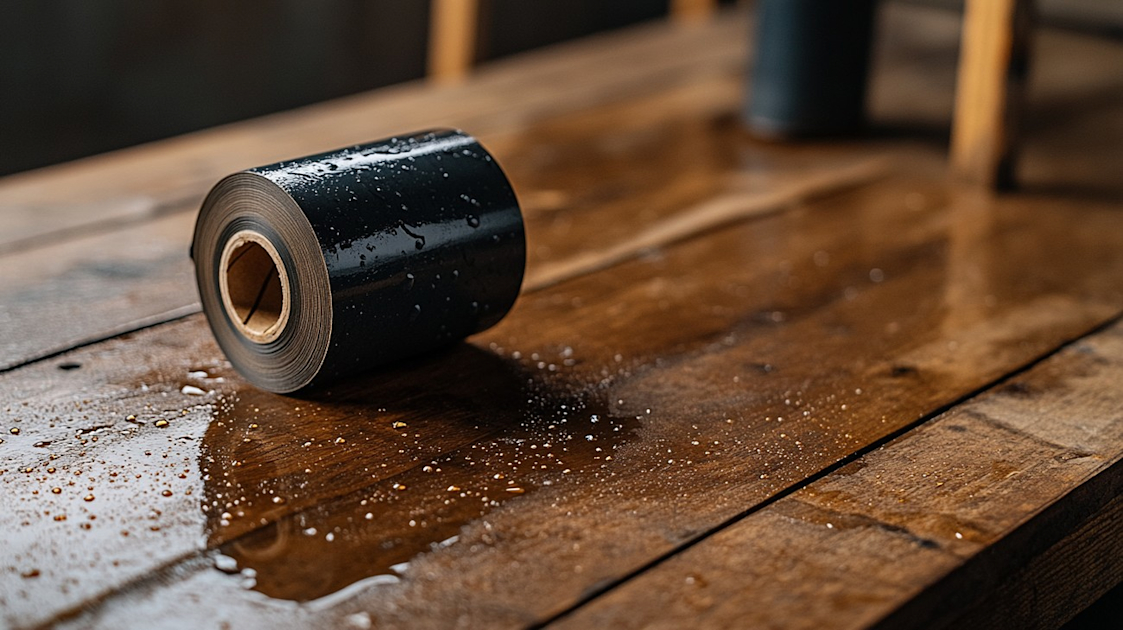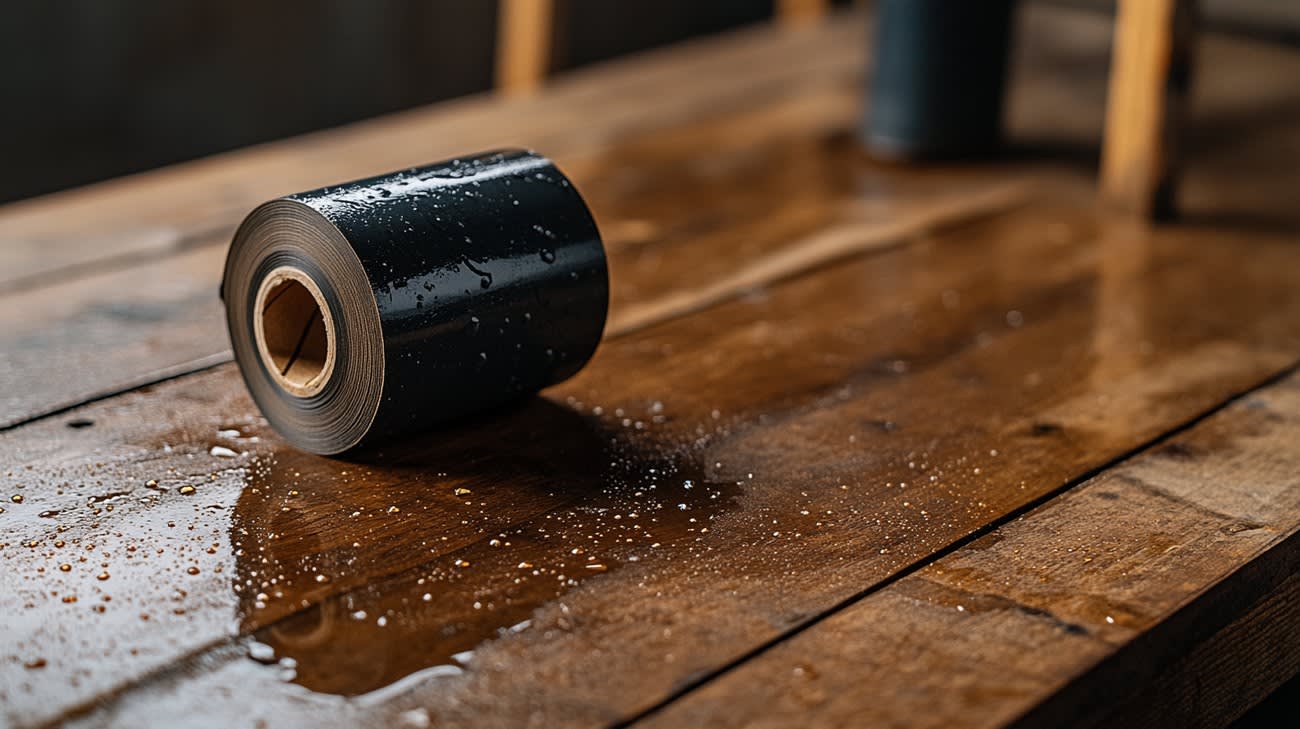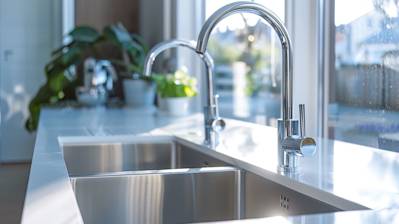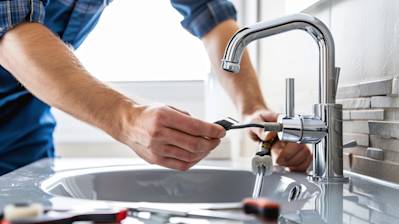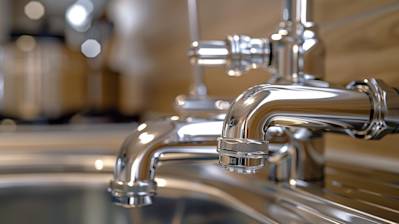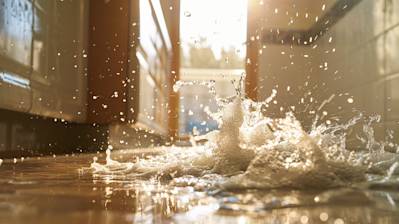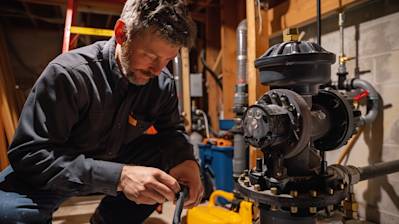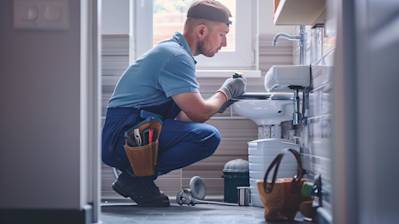Leak tapes, also known as plumber’s tapes, are essential tools for a hands-on homeowner or a professional plumber. These handy tools can help address common household issues such as dripping pipes or leaky faucets, thus saving you from costly water damage. Since this is an important and often overlook product, this comprehensive guide will explore everything you need to know about leak tape.
Understanding What Leak Tape Is
Leak tape is a type of sealing adhesive used primarily to prevent leaks in your home plumbing system. Usually made from materials like silicone, rubber, or vinyl, leak tapes provide an effective and durable seal, preventing water leakage that can lead to substantial property damage.
Now that you know what leak tape is, understanding how to choose the right one can help you solve your leaking problems more efficiently.
Choosing the Right Leak Tape
Different leak tapes serve different purposes. These are the most common types:
- PTFE Tape: Also known as Teflon tape, it is often used to create water-tight seals in threaded joint connections.
- Duct Tape: An all-purpose adhesive tape, usually used for quick fixes and temporary solutions.
- Self-Amalgamating Tape: This tape creates a solid rubber bond when stretched around a leak, providing a firm seal.
- Silicone Tape: It forms a super tight seal and is often used for emergency pipe repairs due to its high resistance to heat.
Upon selecting the correct type of leak tape, the next step is understanding how to use it properly for your leaks or drips.
How to Use Leak Tape Properly
Using tape for leaks involves adequately winding the tape around the area to form a secure bond. Follow the steps below for the most effective usage:
- Clean The Surface: Make sure the surface where the tape is to be applied is clean. Any dirt or loose debris may reduce the effectiveness of the seal.
- Apply the Tape: Start wrapping the leak tape around the area, making sure to overlap the tape by about 50% with each wrap. This allows the tape to bond better and form a strong seal.
- Firm Pressure: Apply firm pressure when wrapping the tape to ensure it adheres properly to the surface.
- Secure the End: Once you’ve finished wrapping, make sure to secure the end of the tape well. This prevents the tape from unwinding, ensuring a long-lasting seal.
Remember that patience and precision are crucial to ensure the tape adequately creates a water-tight seal.
Maintenance and Replacement of Leak Tapes
Despite its efficiency, leak tape isn't a permanent solution. It will need regular checks and possible replacement over time due to wear and tear. Here are some signs that your tape might need replacement:
- Bulges or swelling on the tape
- Constant dripping even after applying the tape
- Discoloration or peeling of the tape edges
Ensure to replace the tape immediately once you spot these signs to avoid severe leaks that could cause costly damages. Also, adhere to the manufacturer's recommended period of use for the particular leak tape you’re using.
Frequently Asked Questions about Leak Tape
What Kind of Leaks can Leak Tape Help With?
Leak tape is a versatile tool that can be used across a variety of leaking problems. It’s great for fixing minor pipe leaks, hose leaks, plumbing leaks, or even air compressor leaks. It's worth noting, however, that this tape is intended for minor leaks and not suited for large-scale plumbing problems.
Is Leak Tape Different from Plumbing Tape?
Yes, and understanding the difference can help you in choosing the right tape for your needs. Leak tape is used for stopping leaks temporarily in pipes, whereas plumbing tape (also known as thread seal tape or PTFE tape) is typically used to seal pipe threads in plumbing to prevent leaks in the joints.
Can I Use Leak Tape for Gas Leaks?
No, it is not recommended. Leak tape is great for water-based leakage but it is not suitable for gas leaks. Gas leaks are high-risk situations that require immediate professional attention. It would be best to turn to a certified professional for gas leak problems.
Can I Apply Leak Tape to a Wet Pipe?
Yes, you can. Leak tape is designed to be applied to wet surfaces. It’s water-activated, so it slightly adheres to the pipe as soon as it comes in contact with water.
How Long Does Leak Tape Last?
The longevity of the tape depends on the quality of the product and how well it has been applied. In general, a good quality leak tape, when applied correctly, can last up to two years in milder conditions. However, it's important to monitor the situation regularly and seek a professional if the leak persists. It's a temporary fix and not a substitute for full repair.
How to Install Leak Tape?
To install leak tape, identify the leak, clean the area around it, and dry it thoroughly. Once done, unroll the leak tape, wrap it tightly around the leak, stretching the tape as you go for a tight fit. The tape should extend several inches past the leak in all directions. Lastly, apply pressure on the leak tape for a few seconds to ensure a firm hold.
I Can't Remove Leak Tape, What Should I Do?
If you have trouble removing leak tape, it could be because it adheres tightly when applied correctly. You can try to loosen it by applying heat using a hairdryer. Alternatively, a safe and non-harmful solvent can also help to loosen the adhesive. If all of these fail, consider hiring a professional to avoid damaging the pipe or its surrounding areas.
Is Leak Tape Environmentally Friendly?
Many makers of leak tape produce products that are environmentally friendly. They can be made from silicone, which is recyclable, and they often exclude harmful chemicals. However, it can vary by brand, so check the product specifications or reach out to the manufacturer to confirm.
Pros
Cost-Effective
One of the greatest advantages of leak tape is its cost-effectiveness. Compared to other methods such as hiring a professional plumber or purchasing expensive equipment, using leak tape is a far more affordable option. This makes it a popular choice for homeowners on a budget.
Easy to Use
Leak tape is incredibly easy to use, even for those who are not particularly technically inclined. All it takes is wrapping the tape around the leaking region to create a tight seal. It doesn't require any special tools or complex installation techniques, making it suitable for use by virtually everyone. This ease of use also saves time, as you don't have to wait for a professional to come over and fix the problem.
Versatile
Leak tape is a versatile tool because it can be used in a wide variety of situations and on various types of fixtures. Whether you have a leaking pipe, a hose, or even fixtures in your kitchen or bathroom, leak tape can seal the gap and stop the leak. It's a practical tool to have around the house for tackling different types of leaks.
Temporary Fix
If a leak occurs suddenly and it’s impossible to get professional help right away, leak tape offers a temporary solution. It can patch up the leak and prevent further water damage while you wait for a plumber or a more permanent fix. It’s an essential item in any emergency repair toolkit.
Transparent
Many types of leak tape are transparent, meaning they don't leave an unsightly residue or discoloration on your fixtures. You can, therefore, use them without worrying about compromising the aesthetics of your home.
Cons
Not a Permanent Solution
The primary disadvantage of leak tape is that it's not intended to provide a permanent solution. Over time, the tape can lose its adhesive properties and begin to peel off, or the pressure of continuous water flow can cause it to give way. Therefore, while leak tape can provide a quick fix, it should be used as a temporary solution while you work on finding a more permanent one.
Limitations in Pressure Handling
Leak tape is not designed to handle high-pressure leaks, which often occur in main pipework systems or high-use areas like showers. For such leaks, using tape might not be effective, and could result in continued leaking or even a burst pipe due to the build-up of pressure.
Damage to Surfaces
While leak tapes are designed to create a strong bond with the surfaces they are applied to, this can sometimes be a disadvantage. When removing the tape, it might peel off paint or cause damage to delicate surfaces due to its adhesive properties.
Quality Variations
The effectiveness of leak tape also greatly depends on the brand and quality. Some tapes might not adhere as well as others and could fail to create a strong seal, especially if the surface is wet or dirty. It’s essential to find a reliable and qualitative brand, which can sometimes be a challenging task.
Dependence on Surface Condition
The performance of leak tape is highly dependent on the condition of the surfaces where it’s applied. Surfaces that are wet, dirty, or have a rough texture might make it difficult for the tape to adhere effectively. In some cases, this could result in the failure of the tape to stop the leak.
Sensitivity to Temperature
Most leak tapes are sensitive to extreme temperatures. So, if they're used in areas that experience high temperatures, there's a risk that the adhesives could melt and make the tape ineffective. On the other hand, in very cold conditions, the adhesives could harden and lose their grip, which also compromises their effectiveness.
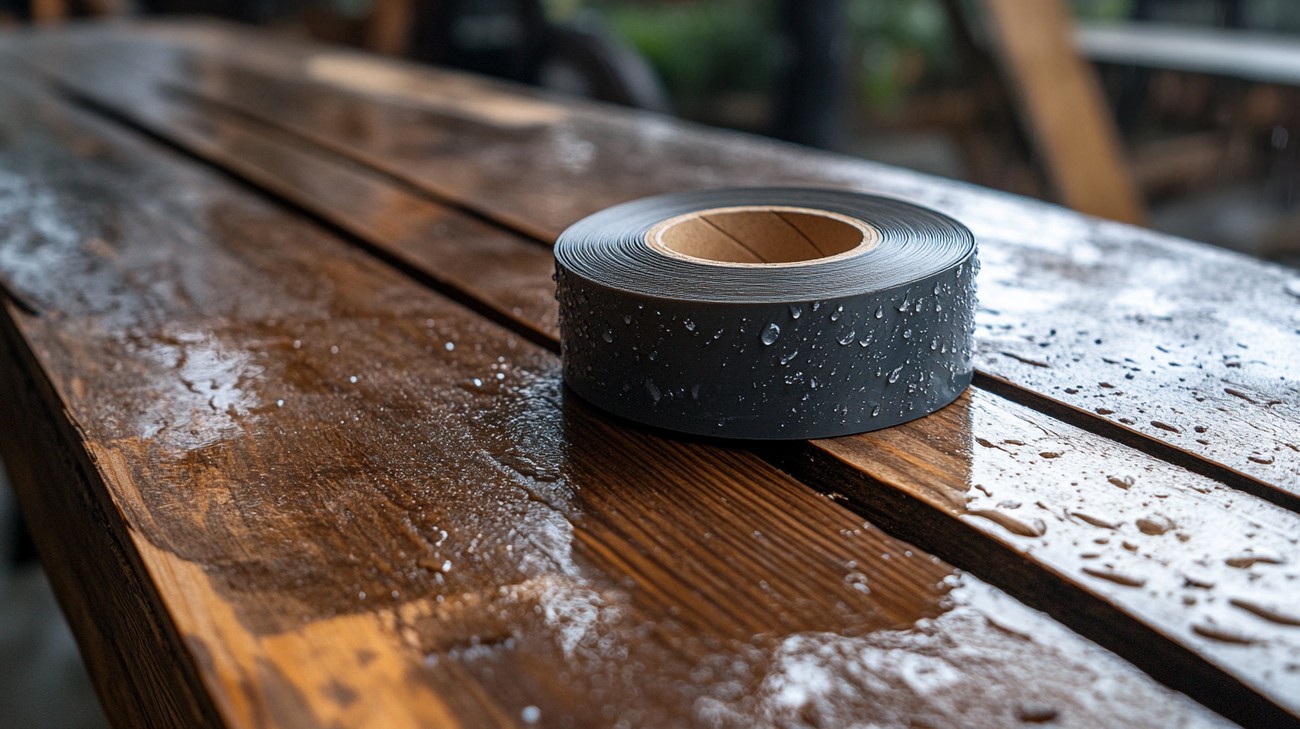
Myths and Misconceptions about Leak Tape
Leak tape or also known as plumber's tape is a ubiquitous material used in various plumbing and DIY applications. Despite its popularity, a cloud of myths and misconceptions often surrounds this versatile tool. Let's take a thorough dive into the most common fallacies about leak tape.
All Leak Tapes Are the Same
One commonly held misconception is that all leak tape is identical. This is far from the truth. >
Material Differences
There are several types of leak tape available on the market, each produced from different materials and designed for varying functions. Common materials include PTFE (Polytetrafluoroethylene), Teflon, aluminum, and even silicon-based leak tapes. These various types of leak tape have distinct properties, including temperature resistance, durability, flexibility, and cost. Consequently, they are suitable for different types and sizes of leaks or waterproofing needs.
Thickness and Density Variations
There are also variations in thickness and density among leak tapes, which substantially impact their functionality. High-density leak tape is typically harder and more durable, making it ideal for high-pressure leaks. In contrast, low-density tape is softer and more elastic, which works best for smaller, low-pressure leaks.
More Layers Equals Better Sealing
Another frequently encountered myth about leak tapes is that applying more layers will result in better sealing of leaks. However, this is not always the case.
Proper Application is Key
While the number of layers can play a role in sealing a leak, the effectiveness of leak tape is more reliant on its proper application. This involves cleaning the surface appropriately, cutting the tape with sufficient length for the required coverage, and applying the tape with correct tension.
Risk of Over-Tightening
Adding more layers of tape can sometimes lead to over-tightening, resulting in stress on the pipe threads and even causing them to crack or damage. Always follow the manufacturer's instructions regarding the application of the leak tape.
Leak Tape Can Fix All Types of Leaks
It's a common misconception that leak tape is a universal solution for all types of leaks. Unfortunately, this is not accurate.
Suitable for Temporary Fixes
Leak tape can provide a quick and easy fix for small, non-pressurized leaks as a short-term solution. However, it is not built for permanent, long-term repairs, especially for leaks under high pressure.
Not All Leaks Are Tape-Friendly
Leaks that result from significant pipe damage, corrosion, or gaps in pipe joints frequently require more comprehensive solutions. These may include pipe replacements or professional repairs. Using leak tape in these scenarios only hides the problem temporarily and might even worsen the issue over time.
Leak Tape Ruins Threads
A pervasive myth about leak tape is that it ruins or damages the pipe threads. This misconception stems from improper usage of the tape rather than the tape itself.
Tape Application Direction Matters
When incorrectly applied, the leak tape might loosen and shred during the connection or disconnection of the pipes, leaving behind remnants that could potentially damage the threads. Always remember to apply the tape in the same direction as the pipe threading to prevent this issue.
Select the Right Kind of Tape
Also, using a tape too thick for the application can lead to over-tightening, causing stress on the threads. Always select the right type of tape based on the specific requirements of your task.
Cheap Leak Tape Works Just as Well
While it's tempting to believe that cheap leak tape works just as well as its pricier counterparts, this is often a misconception.
Quality Matters
Higher-priced leak tape tends to be of a superior quality, offering improved durability, better adhesion, and superior leakage prevention. Cheap tapes can be thinner, less sticky, and might not withstand high pressure, temperature fluctuations, or long-term use.
You Get What You Pay For
While the initial cost of cheap leak tape might be less, the potential for needing repeated applications or dealing with damage caused by leaks not properly sealed could end up costing more in the long run. Hence, it's beneficial to invest in higher-quality tapes to prevent leaks effectively.
By debunking these myths and misconceptions, we can help to improve understanding of leak tape, its uses, limitations, and proper application techniques. Keep this guide in mind the next time you reach for leak tape to ensure that you're using this versatile tool to its fullest potential.
Summary
So, there you have it. Leak tape is a fantastic solution for any unexpected leaks around the house. Whether it's your kitchen sink, garden hose or even the roof leaking, this tape can easily seal the problem. It's cheap, handy, and incredibly easy to use which really adds to the appeal.
Remember, it's not just for emergencies. Leak tape is super versatile, and in keeping spare rolls, you're giving yourself a bit of added security. From preventing a small drip from becoming a major headache to patching a worn-out garden hose, leak tape steps up its game every time. It's a must-have for all homes!
Leak tape isn't just for DIY enthusiasts either, anyone can use it! If you have a leak, don't fret, just grab your roll of leak tape and follow the instructions. You'll find that stopping leaks can be as easy as a quick peel and stick. And the best part? It does the job right, bringing you peace of mind and a dry home.
About KYPD Plumbing
KYPD Plumbing is your friendly neighborhood service provider in Lexington, KY, that prides itself on professional, top-notch plumbing services. Always ready to jump in when duty calls, we've been keeping the pipes running smoothly and the water flowing freely in homes and businesses around here for years. Our team of experienced and skilled plumbers consistently offer reliable, efficient solutions with a genuine smile. It's no wonder KYPD Plumbing is a household name in Lexington, KY. From unclogging your morning routine to tackling the aftermath of a burst pipe, trust us to take care of it all!
Tags: leak tape, plumbing repair, waterproof tape,

